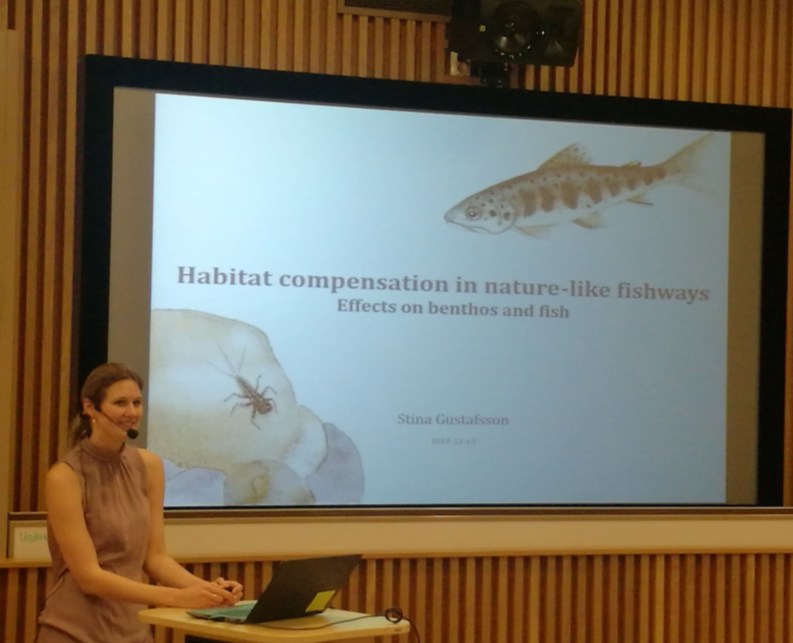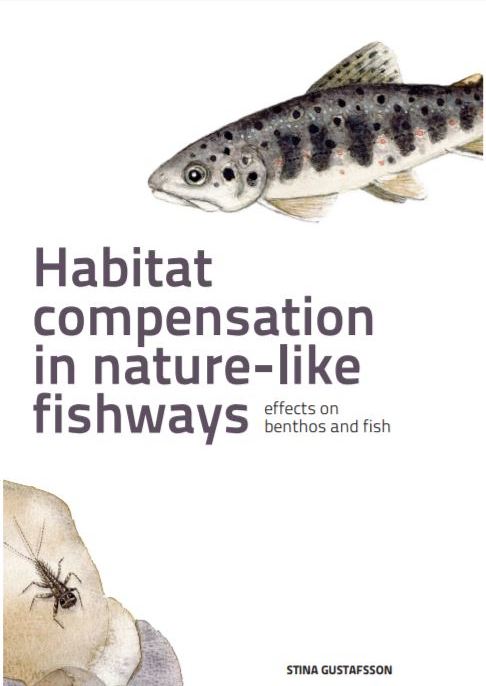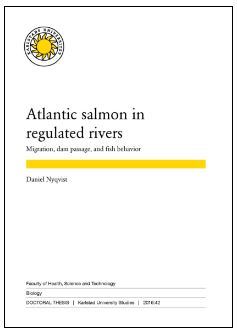Paper: An angled rack with a bypass and a nature-like fishway pass Atlantic salmon smolts downstream at a hydropower dam
Posted by Karl Filipsson | PapersDaniel Nyqvist, Jonas Elghagen, Marius Heiss and Olle Calles recently published the article “An angled rack with a bypass and a nature-like fishway pass Atlantic salmon smolts downstream at a hydropower dam” in the journal Marine and Freshwater Research.
In the abstract, the authors write:
Hydropower dams disrupt longitudinal connectivity and cause fragmentation of river systems, which has led to declines in migratory fish species. Atlantic salmon smolts rely on intact longitudinal connectivity to move downstream from rearing habitats in freshwater to feeding grounds at sea. Smolts often suffer increased mortality and delays when they encounter hydropower plants during their downstream migration. Currently, there are few examples of downstream passage solutions that allow safe and timely passage. We assessed the performance of two passage solutions at a hydropower dam, namely, an angled 15-mm rack with a bypass and a large nature-like fishway. The performance of these new fish passage solutions was evaluated by tracking radio-tagged Atlantic salmon smolts as they encountered the facilities. The radio-tagged smolts passed the dam 9.5 h after release (median) and exhibited a dam-passage efficiency of 84%, with passage rates increasing with body length. Fish passage occurred through both the rack bypass and the naturelike fishway. The passage efficiencies were 70–95% for the rack bypass and 47% for the nature-like fishway. The new fish passage facilities resulted in improved passage conditions at the site, confirming that angled racks with bypasses as best practise solutions for downstream passage, but also that large nature-like fishways may act as downstream passage routes for salmon.
Access the paper here, or contact any of the authors.





